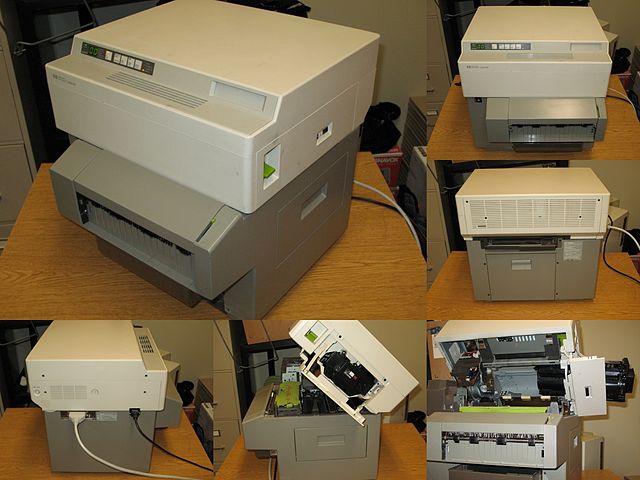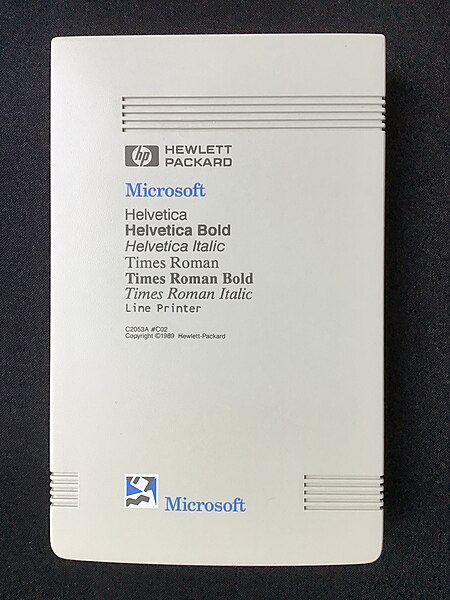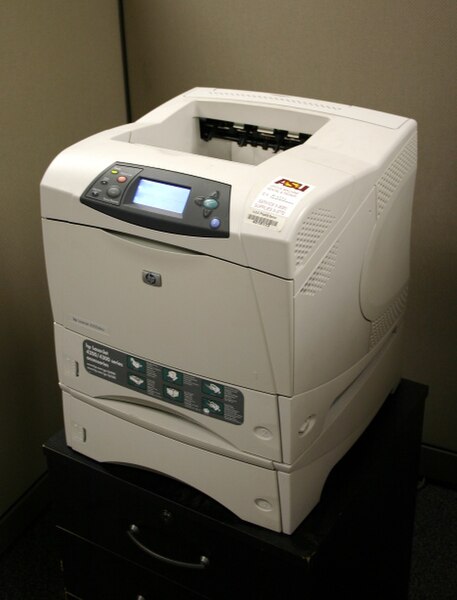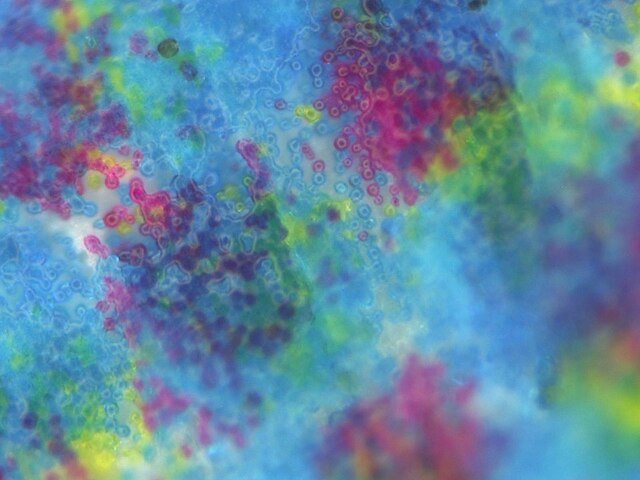LaserJet as a brand name identifies the line of laser printers marketed by the American computer company Hewlett-Packard (HP). The HP LaserJet was the world's first commercially successful laser printer. Canon supplies both mechanisms and cartridges for most HP laser printers; some larger A3 models use Samsung print engines.
The LaserJet 500 Plus (model 2686D) was the largest of the early LaserJet series.
Laser head from HP LaserJet 5L printer
HP Microsoft Font Cartridge for LaserJet 2000, IIP, IIIP, etc.
PostScript Cartridge for LaserJet IIP, IID, III, IIID, etc.
Laser printing is an electrostatic digital printing process. It produces high-quality text and graphics by repeatedly passing a laser beam back and forth over a negatively charged cylinder called a "drum" to define a differentially charged image. The drum then selectively collects electrically charged powdered ink (toner), and transfers the image to paper, which is then heated to permanently fuse the text, imagery, or both, to the paper. As with digital photocopiers, laser printers employ a xerographic printing process. Laser printing differs from traditional xerography as implemented in analog photocopiers in that in the latter, the image is formed by reflecting light off an existing document onto the exposed drum.
HP LaserJet 4200 series printer, installed atop additional 500-sheet paper tray
Gary Starkweather (seen here in 2009) invented the laser printer.
Laser unit from a Dell P1500. The white hexagon is the rotating scanner mirror.
Magnification of color laser printer output, showing individual toner particles comprising 4 dots of an image with a bluish background








